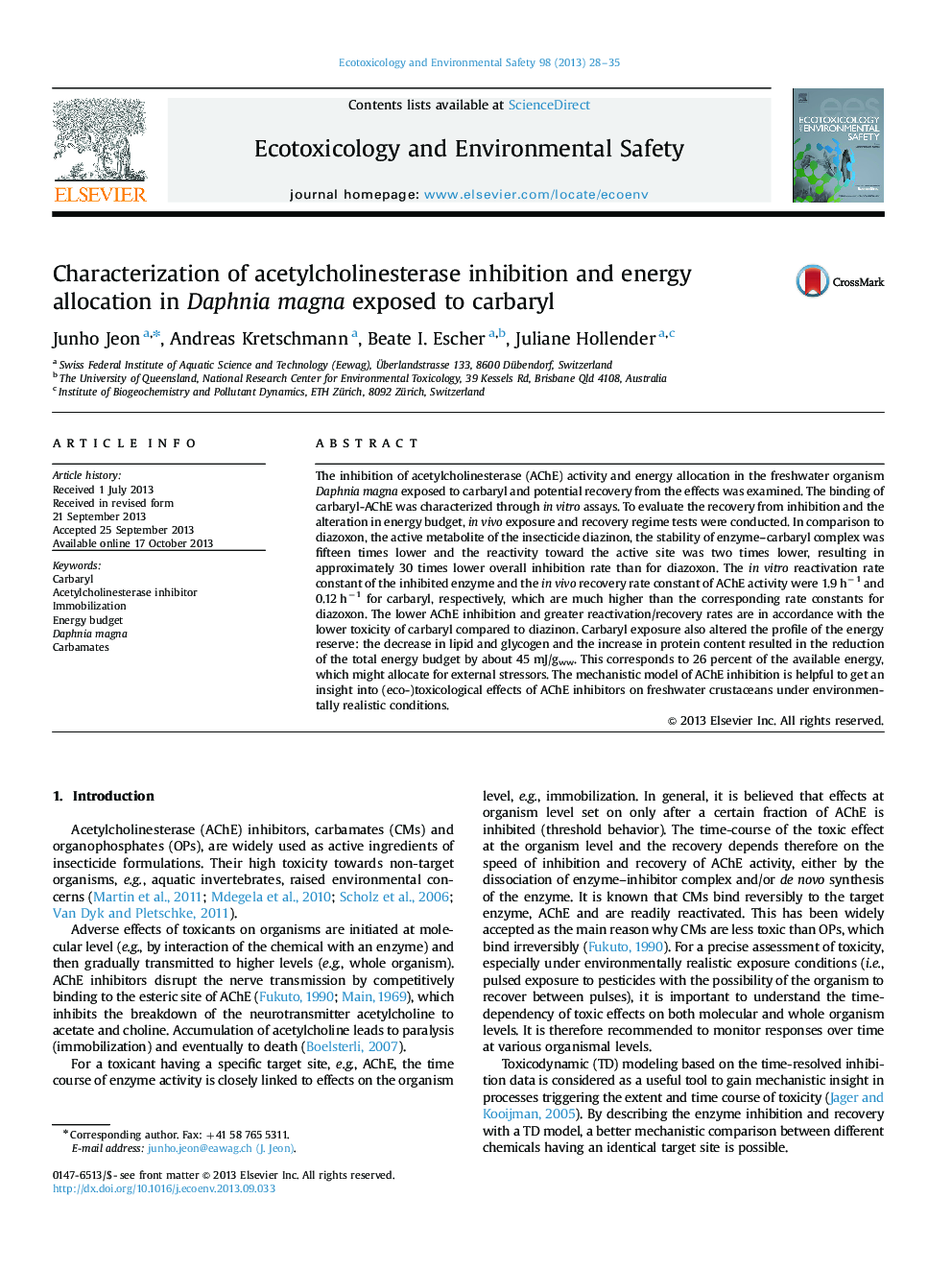| کد مقاله | کد نشریه | سال انتشار | مقاله انگلیسی | نسخه تمام متن |
|---|---|---|---|---|
| 4420373 | 1618965 | 2013 | 8 صفحه PDF | دانلود رایگان |

• Carbaryl is regarded as a reversible acetylcholinesterase inhibitor toward Daphnia magna.
• The overall inhibition rate of carbaryl is about 30 times lower than diazoxon.
• The reactivation of carbaryl–enzyme complex is significantly faster than diazoxon.
• After carbaryl exposure, lipid and glycogen decrease, but protein increases.
• The energy cost for the exposure is 45 mJ/gww (26 percent of the available energy).
The inhibition of acetylcholinesterase (AChE) activity and energy allocation in the freshwater organism Daphnia magna exposed to carbaryl and potential recovery from the effects was examined. The binding of carbaryl-AChE was characterized through in vitro assays. To evaluate the recovery from inhibition and the alteration in energy budget, in vivo exposure and recovery regime tests were conducted. In comparison to diazoxon, the active metabolite of the insecticide diazinon, the stability of enzyme–carbaryl complex was fifteen times lower and the reactivity toward the active site was two times lower, resulting in approximately 30 times lower overall inhibition rate than for diazoxon. The in vitro reactivation rate constant of the inhibited enzyme and the in vivo recovery rate constant of AChE activity were 1.9 h−1 and 0.12 h−1 for carbaryl, respectively, which are much higher than the corresponding rate constants for diazoxon. The lower AChE inhibition and greater reactivation/recovery rates are in accordance with the lower toxicity of carbaryl compared to diazinon. Carbaryl exposure also altered the profile of the energy reserve: the decrease in lipid and glycogen and the increase in protein content resulted in the reduction of the total energy budget by about 45 mJ/gww. This corresponds to 26 percent of the available energy, which might allocate for external stressors. The mechanistic model of AChE inhibition is helpful to get an insight into (eco-)toxicological effects of AChE inhibitors on freshwater crustaceans under environmentally realistic conditions.
Journal: Ecotoxicology and Environmental Safety - Volume 98, 1 December 2013, Pages 28–35